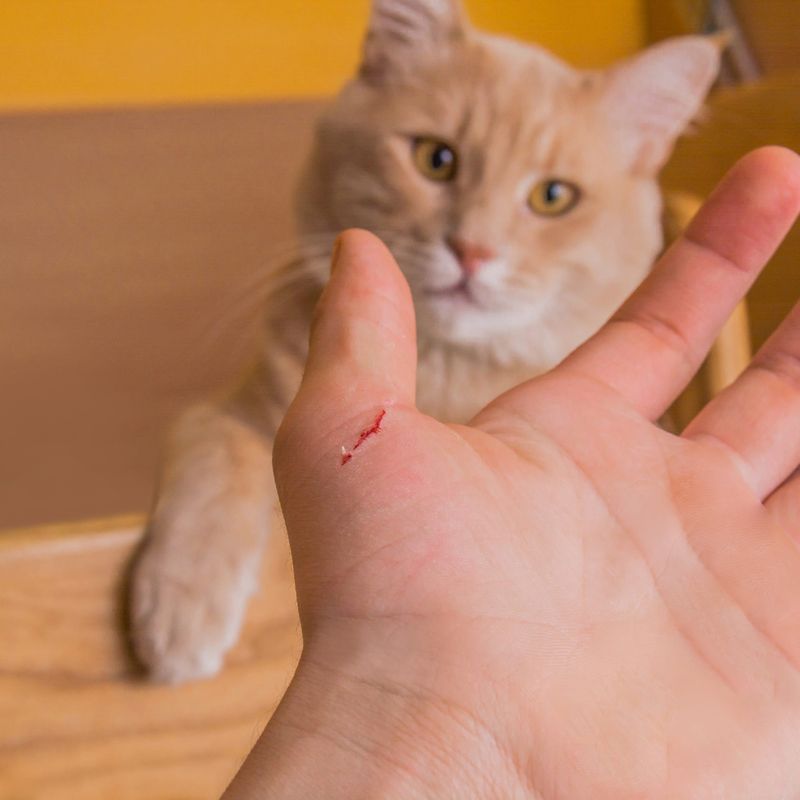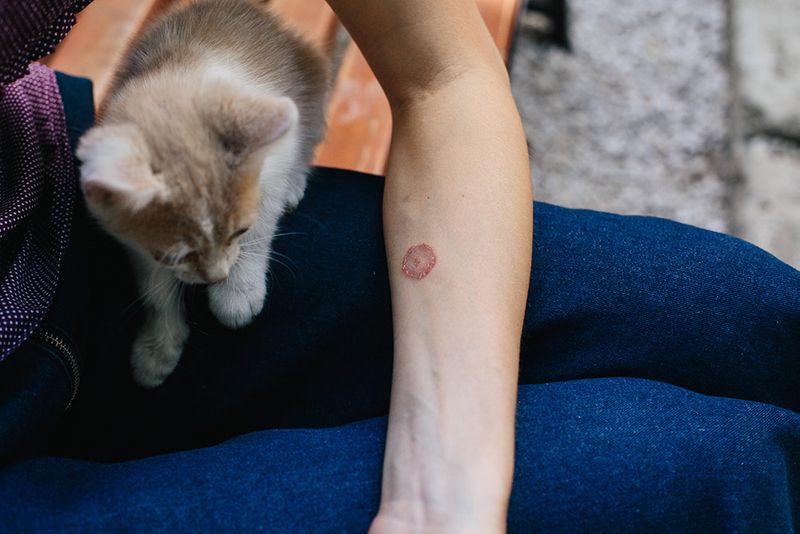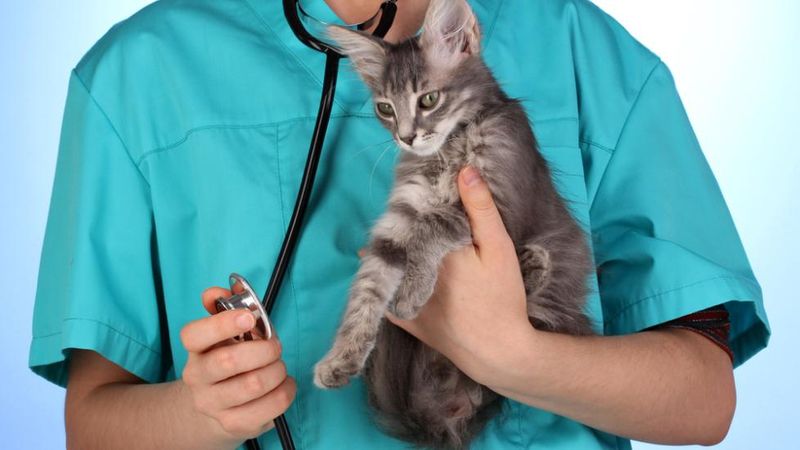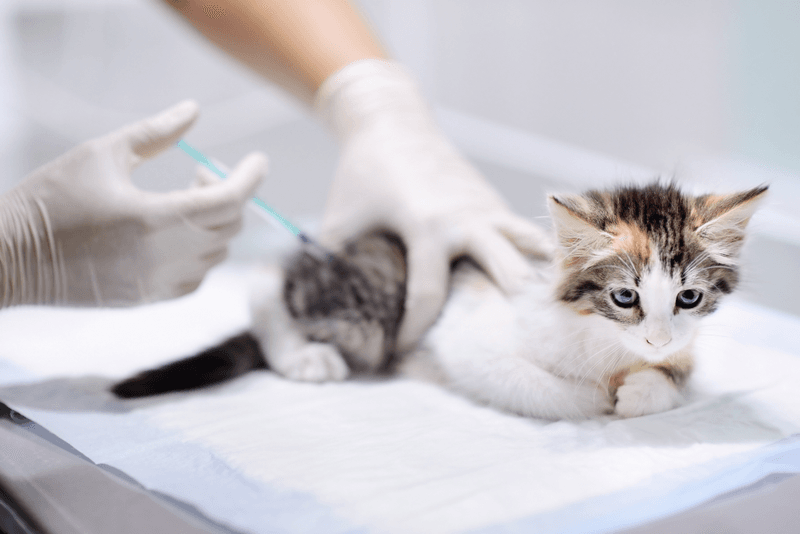📖 Table of Content:
Cats bring companionship, warmth, and a lot of charm into our lives. From their purring cuddles to their playful antics, it’s easy to forget that even the healthiest-looking feline can harbor diseases capable of crossing the species barrier. While most cat-human interactions are harmless, it’s important to stay informed about potential health risks.
Zoonotic diseases—illnesses that can be passed from animals to humans—are more common than many pet owners realize. In cats, some of these conditions may show little to no symptoms, making detection challenging. Yet a simple scratch, cuddle, or litter box cleanup could potentially transmit something serious if precautions aren’t taken.
Understanding these risks doesn’t mean fearing your cat—it just means being a smart, responsible pet parent. Basic hygiene, regular vet visits, and knowledge of warning signs can go a long way in keeping both you and your feline friend safe. Below are seven illnesses you can catch from cats—and what to look for.
1. Toxoplasmosis
Among all cat-borne illnesses, toxoplasmosis is one of the most well-known and often misunderstood. It is caused by a microscopic parasite, Toxoplasma gondii, which cats typically acquire by eating infected rodents or raw meat. Humans can become infected by handling contaminated cat feces, often while cleaning litter boxes without proper hygiene. In most healthy adults, the infection is mild or unnoticed altogether, with flu-like symptoms that disappear quickly. However, the parasite poses a significant risk to pregnant women, as it can harm an unborn baby. People with weakened immune systems should also take special care, as the infection may spread to the brain or eyes. Fortunately, avoiding infection is as simple as wearing gloves when gardening or cleaning litter, and washing hands thoroughly.
2. Cat Scratch Disease (Bartonellosis)
Occasionally, a playful scratch or bite from a cat can lead to more than just a small wound. Cat Scratch Disease, caused by the bacterium Bartonella henselae, is typically transmitted through broken skin after a scratch or bite. Kittens are more likely to carry the bacteria and may transmit it without showing symptoms themselves. Within a few days to a couple of weeks, people may experience swollen lymph nodes near the site of the scratch, along with fever and fatigue. In most cases, the disease resolves on its own, but in rare cases it can cause complications affecting the liver, eyes, or nervous system. Medical attention may be needed if symptoms worsen or persist. Maintaining trimmed claws and avoiding rough play can reduce the risk of transmission.
3. Ringworm (Dermatophytosis)
Despite its name, ringworm isn’t a worm at all—it’s a fungal infection that’s highly contagious. The condition can spread from an infected cat to a human through direct contact with the skin, fur, or bedding. It appears as a red, circular rash that may be itchy and scaly, and it can show up anywhere on the body. In cats, symptoms can be subtle, sometimes only showing as patchy fur loss or dandruff-like flakes. Because the fungus can live on surfaces like furniture and carpets, even indirect contact can lead to transmission. Ringworm is treatable with antifungal creams or medications once diagnosed. To reduce the spread, it’s important to keep infected cats isolated during treatment and clean their environment thoroughly.
4. Salmonellosis
Not just a foodborne illness, salmonellosis can also be contracted from your furry friend. Cats may carry Salmonella bacteria if they consume raw meat or prey, and the bacteria can be shed in their feces. Humans may become infected through handling contaminated litter or cleaning up after diarrhea episodes. Once infected, individuals might experience diarrhea, stomach cramps, vomiting, and fever—sometimes severe enough to require hospitalization. The illness is particularly risky for children, the elderly, and immunocompromised individuals. Washing hands after any contact with cat waste or raw pet food is a crucial step in prevention. Feeding your cat properly cooked food and practicing good hygiene are key defenses against this bacterial threat.
5. Campylobacteriosis
Surprisingly, even indoor cats can carry Campylobacter bacteria, which causes gastrointestinal illness in humans. People typically become infected after coming into contact with contaminated feces, often during litter box duty. The bacteria may cause diarrhea (sometimes bloody), fever, cramping, and nausea that can last for several days. While most healthy adults recover without antibiotics, infants and older adults are at greater risk for complications. Cats infected with Campylobacter often show no signs of illness, making it hard to know when they’re contagious. Using gloves when handling waste and washing hands diligently are strong protective measures. Keeping litter boxes clean and disinfected further limits the chances of spreading the bacteria.
6. Rabies
Rare but always fatal without treatment, rabies is one of the most serious diseases that can pass from cats to humans. The virus is transmitted through bites, and although rabies is more commonly associated with wild animals, unvaccinated cats exposed to wildlife can become carriers. Once symptoms appear in humans—such as confusion, fever, hallucinations, and paralysis—the disease is almost always deadly. Thankfully, rabies is preventable through routine vaccinations for pets and prompt medical attention after any potential exposure. If a cat behaves unusually or aggressively, it should be examined by a veterinarian immediately. Keeping cats indoors and away from stray or wild animals helps minimize their risk of infection. Rabies remains a public health concern despite its rarity.
7. Hookworms and Roundworms
Common intestinal parasites like hookworms and roundworms don’t just affect cats—they can also infect humans in unpleasant ways. Children are especially at risk when playing in contaminated soil or sandboxes where infected cats may have defecated. Roundworms can cause a condition called visceral larva migrans, where the parasite migrates through internal organs, sometimes affecting the eyes or brain. Hookworms, on the other hand, can penetrate the skin, causing itchy, red trails known as cutaneous larva migrans. While deworming pets regularly helps prevent these infections, environmental control is also key. Wearing shoes outdoors, using gloves while gardening, and washing hands after handling pets are all smart practices. Proper litter box hygiene goes a long way in cutting down risk for the whole household.







